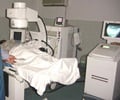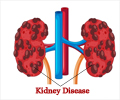Health outcomes in patients with kidney disease can be predicted with the help of different symptom trajectories.
- The prevalence of each symptom ranged from 24% (chest discomfort) to 83% (fatigue) among people with various degrees of chronic kidney disease who were not receiving dialysis, and 98% of participants reported having at least one symptom
- Patients with a ‘worse symptom score and worsening trajectory’ of symptoms were more likely to require dialysis in the future and to pass away before starting treatment
Symptoms of Chronic Kidney Disease Patients
98% of participants reported experiencing at least one symptom, with the prevalence of each symptom ranging from 24% (chest discomfort) to 83% (fatigue). 690 people began kidney replacement therapy (KRT), such as dialysis, after a median follow-up of 5.3 years, while 490 participants passed away before KRT.Symptom Trajectory Profile in Kidney Disease Patients
The team found two types of symptom trajectory profiles: a ‘worse symptom score and worsening trajectory’ in 31% of participants, which was defined by a low initial symptom score that got worse by more than 10 points (on a scale of 0-100) over time, and a ‘better symptom score and stable trajectory’ in 69% of participants, which was defined by a high initial score that stayed stable over time.Better quality of life, more risk factors for CKD progression at baseline, a higher risk of KRT, and a higher chance of death before KRT were all present among participants in the group of ‘worse symptom score and worsening trajectory’ than in other people.
“In addition to the existing classifications of CKD, it is possible to monitor symptoms actively and classify patients according to their progression. This monitoring should involve practitioners and patients,” said Dr Faye. “This active symptom tracking will allow early therapeutic interventions to be planned to help manage different symptoms.”
Source-Medindia
















